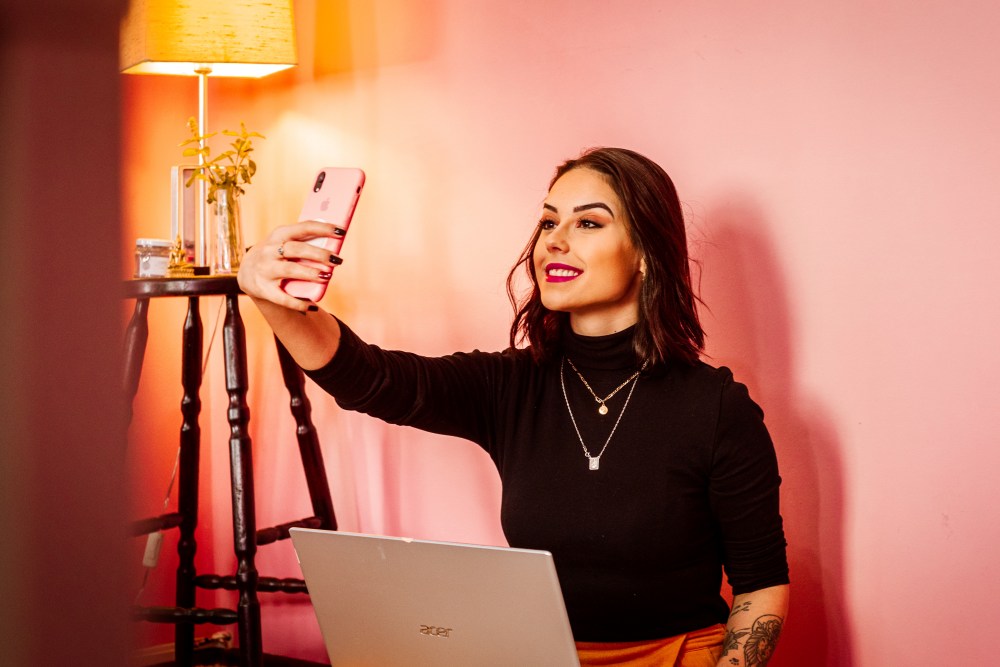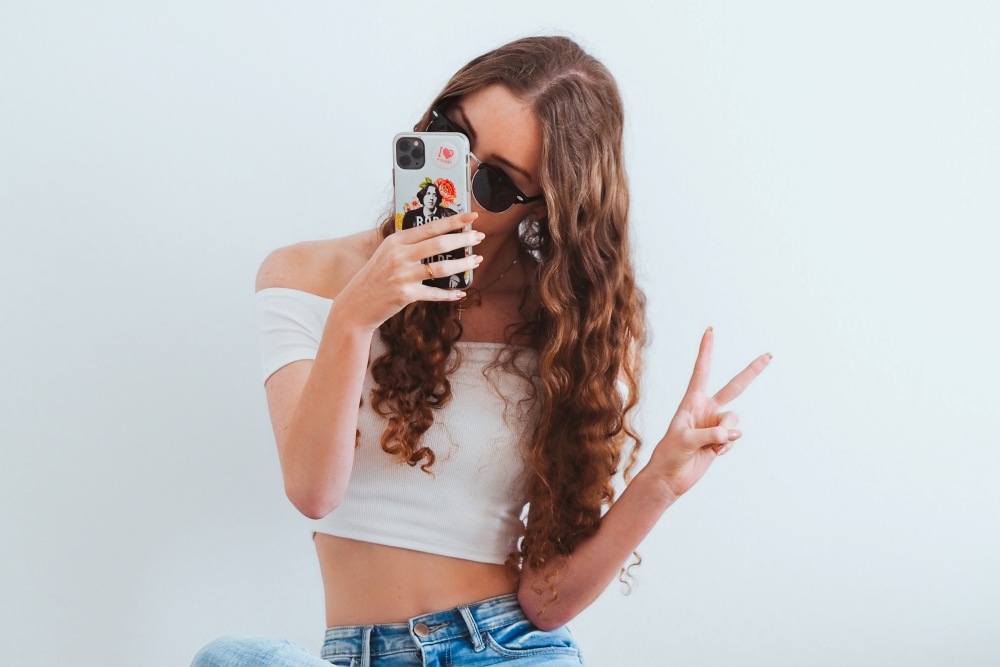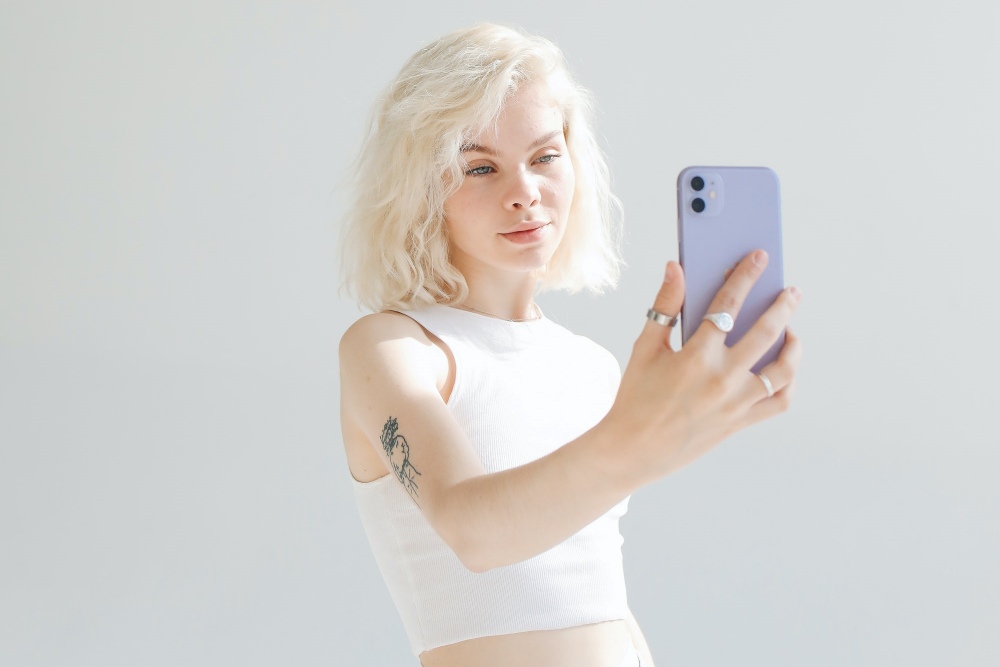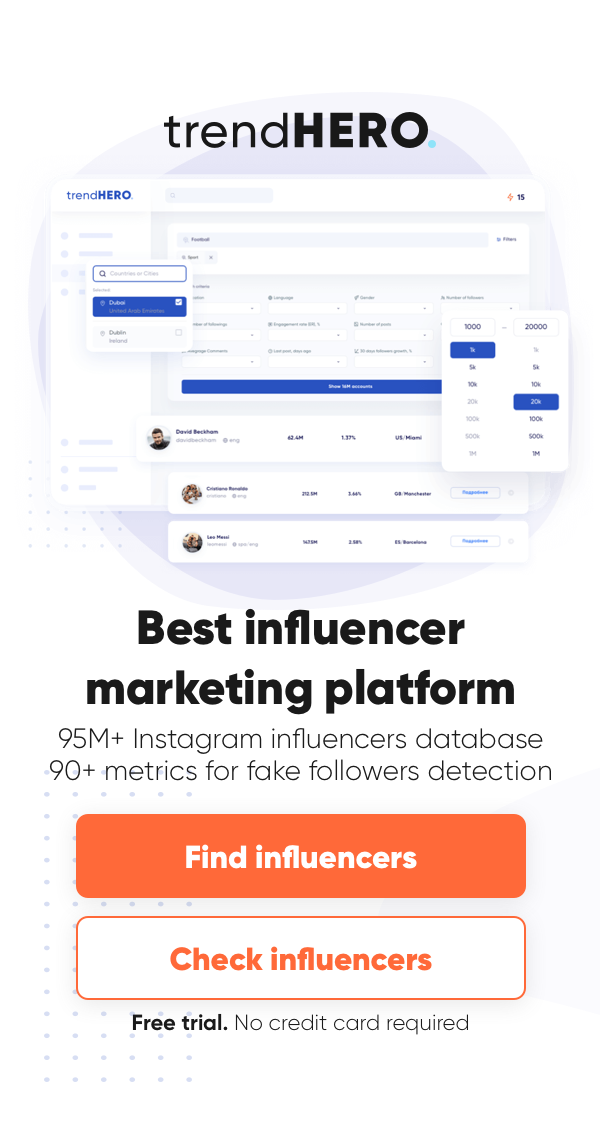- Home
- BLOG
- Influencers
- 16 Influencer Marketing Statistics You Should Know
Marketing has changed significantly over the last decade. First, we saw the shift from television and traditional marketing material to social media platforms like Facebook, Instagram, and YouTube. Since then, we’ve seen some more changes with the introduction of influencer marketing campaigns.
Followers on social media now look to their favorite influencers to okay products before making a purchase. Consumers now want honest reviews from people they admire and trust before deciding to purchase a product.
Below we take a look at what influencer marketing is, types of influencers, and important statistics that are worth noting.
What Is Influencer Marketing?
Influencer marketing is a form of social media marketing. It involves endorsements, product placements, and sponsored posts from people (influencers) on their social media channels.
Influencers use social media as a space to create content and build up a dedicated social media following. They are often seen as experts in their niche.
For example, many users on Instagram follow skincare influencers. These influencers assist them with skin problems and product choices. Their followers trust their brand recommendations. Because of this, brands may enter into a partnership or ask that the influencer endorse their product in exchange for payment.
The reason influencer marketing efforts work so well is that followers are far more likely to trust a real person over a faceless brand.
Followers are able to engage with the influencer on a higher level. They can get honest reviews, ask questions and receive personal responses as opposed to automated replies.
This builds trust between influencers and their followers. Thus, it gives them far more sway in the online community.
Essentially, influencer marketing campaigns are a great way to use social proof to raise brand awareness.

Types Of Influencers
There are several types of social media influencers. It’s important to know the difference to ensure you collaborate with the right one for your brand.
For example, when mapping out your marketing strategy, you want to choose an influencer with the right target audience and number of followers.
There are essentially five categories of influencers. They are broken up into these categories based on the number of followers on their given social media platform:
- Nano influencers: 1,000 – 10,000 followers.
- Micro-influencers: 10,000 – 100,000 followers.
- Power or mid-tier influencers: 100,000 – 500,000 followers.
- Mega influencers: 500,000 – 1 million followers.
- Celebrity influencers: more than 1 million followers.
Following isn’t necessarily the only point to consider when developing your market strategy with social media influencers though.
There are many aspects that account for influencer marketing success. For example, nano-influencers, despite having a lower following, have the highest engagement rate with their target audience,
But, that being said, it’s far easier to find micro-influencers to collaborate with. This is because they account for 47.3% of influencers.
Whether you choose to partner with nano-influencers, micro-influencers, or celebrity influencers, it’s important to consider the goal of your marketing campaign, your marketing budget, and the audience you’re trying to reach.
Important Influencer Marketing Statistics You Should Know
If you’re planning your influencer marketing campaign or are just on the fence as to whether you should engage with influencer marketing, it may be helpful to consider some of these influencer marketing statistics.
The Influencer Marketing Landscape
To start off, let’s look at the landscape of Influencer marketing. In other words, where it finds itself in the marketing mix, and its net worth.

50.7% of brands working with influencers run eCommerce stores
50.7% of brands engaging in influencer marketing run eCommerce stores. That’s more than half. What does this tell us?
Firstly, the eCommerce business is rising significantly. This means that the retail industry is going through some major shifts.
Secondly, it tells us that the eCommerce industry is well-suited to influencer marketing campaigns.
The main reason for this is that both the brand and the influencer are not limited by location. You can make your brand accessible to anyone around the world. As such, you can cast your net wider when it comes to choosing influencers to collaborate with. It also opens the door to celebrity endorsements.
The influencer marketing industry is set to reach a net worth of $16.4 Billion
If you had any doubt about the influencer marketing industry, this statistic should help with that. The influencer marketing industry is set to reach a whopping $16.4 billion by the end of 2022. This industry is therefore growing quickly from its $13.8 billion net worth in 2021.
So, it’s easy to see why this is one of the most successful marketing channels for small and big brands.
Influencer Marketing Growth Statistics
As we have just noted, the influencer marketing industry has seen incredible growth over the last 5 years. Below we look at key influencer marketing statistics showing just how much the industry continues to grow.
17% of companies devote more than half of their budget to influencer marketing
More companies are using influencer campaigns as their sole marketing strategy. So, it’s no surprise that 17% of companies dedicated more than half of their annual budget to influencer marketing on social media platforms in 2019.
The study further showed that these companies will spend between $100 000 and $500 000 per year on influencer marketing budgets. This clearly shows that more brands favor influencer campaigns over traditional marketing methods. More than half of their annual budget is dedicated to this marketing strategy.

The number of consumers who trust traditional ads is decreasing
Influencer marketing is on the rise as more traditional methods of marketing fade out.
Now, only 33% of consumers claim to trust traditional ads. That means that more and more followers are putting their trust in influencers and peer reviewed products. Moreover, 88% of consumers trust online reviews from people they don’t know personally as much as they would trust a product recommendation from a friend.
So, it’s clear that consumers are persuaded by influencer marketing over traditional ads. This shows an evident growth in the effectiveness of the marketing strategy.
18,900 is the number of influencer marketing agencies in 2021
Influencer marketing statistics show that the industry’s growth has led to increased job opportunities. In 2021, there were 18,900 influencer marketing agencies, with the numbers increasing exponentially over the past few years.
Influencer marketing agencies help to link brands with the right influencers for their target market. They also assist with the nitty gritty legal bits like payment terms and influencer marketing goals.
All in all, agencies work to ensure successful influencer campaigns and a happy relationship between brand and influencer.
93% of marketers have used influencer marketing
More and more brands are engaging with the concept of influencer marketing. Only 7% of those surveyed have never utilized or engaged with a social media influencer.
Global Statistics Relating to Influencer Marketing
Much of the success of influencer marketing rests on the fact that it is not limited by location. As a result, we have seen some global influence when it comes to influencer marketing statistics.
Marketers expect to spend $3.7 billion on influencer marketing globally
Influencer marketing continues to grow daily. More and more brands are entering into influencer partnerships. As a result, marketers predict they will spend around $3.7 billion on influencer marketing globally. That’s a lot of money going towards influencer collaborations!
Influencer marketing industry raises $800 million in funding in for 2021
In 2021, influencer marketing platforms have raised over $800 million in funding which shows the exponential growth in the industry.

Statistics Relating to ROI
Out of all the influencer marketing statistics you need to know, these are some of the most important. When it comes to return on investment, influencer endorsements give a far better return than other marketing channels.
This is largely due to the fact that brands can leverage influencer marketing to reach a wide target audience without breaking the influencer marketing budget.
Influencer marketing achieves 11x the ROI than banner ads
A Convince & Convert study showed that influencer marketing ROI was 11x the ROI of banner ads. In this study, which involved a food brand, the influencer marketing survey used food bloggers on their various social media platforms.
Companies earn $5.20 for every $1 spent on influencer marketing
It’s clear that influencer-generated content performs far better than other marketing strategies. This is clearly indicated by the fact that for every $1 spent on a campaign, you can expect to receive $5.20 in return for that influencer marketing spend.
But, some of the best campaigns can earn around $20 per $1 spent. So, it’s clear that the ROI is unmatched.
Demographics Most Impacted by Influencer Marketing
Who exactly are the potential customers of an Instagram influencer? Below we take a look at the statistics relating to demographics most impacted by influencer marketing.
Gen Z is most influenced
It seems that over all the different social media platforms, Gen Z is the most influenced. Essentially this means they are more likely to respond to an influencer campaign than Millenials and Gen X.
With only 23% of millennials and 16% of Gen X following influencers, it’s clear that it decreases with age.
Women aged 16-24 are 31% more likely to follow influencers than men
Another noteworthy influencer marketing statistic is that women are 31% more likely to follow influencers than men. Specifically, women aged between 16 and 24 years old. This may be largely due to the fact that most influencer marketers are women. A Statista study shows that only 16% are men.

Platform Specific Influencer Statistics
Let’s take a look at how influencer marketing works on different social media platforms. This is also a huge consideration when it comes to brand partnerships and your influencer marketing strategy. You need to choose the right influence on the right platform for your brand and target audience.
97% of marketers consider Instagram the most important influencer channel
It seems that Instagram is the place to be for influencer marketing. 97% of marketers consider it as the most important social media channel.
This is largely due to the many features that Instagram offers that allow visual representation of your brand and product. For example, over and above the usual influencer posts, Instagram offers live videos and Reels. This provides the perfect opportunity for followers to engage with Instagram influencers and your product more than they would on other social media platforms.
TikTok has the highest influencer engagement rate
While Instagram is the hub for influencer marketing, TikTok has the highest influencer engagement rate. This platform is great as many users use TikTok to actually purchase the product.
So, if engagement and conversions are top priorities, then this is a good platform to be on.
40% of Twitter users made a purchase based on an influencer recommendation
While it’s a little less popular than Instagram and TikTok, Twitter is still a great social media platform – especially when it comes to selling products. 40% of Twitter users say they made a purchase based on an influencer recommendation.
So, this is a great platform if your main goal is sales. Plus, the user engagement is pretty good too.
Fewer brands rely on Facebook as an influencer marketing platform
When it comes to influencer marketing, Facebook seems far behind Instagram and TikTok. This could be due to its users being of the older generation.
Facebook has actually seen a decrease of 13% of its influencer marketing potential.

Conclusion
Influencer marketing is the new kid on the block that has so much to offer. Not only does it guarantee great ROI, but it’s also one of the best ways to increase brand loyalty through engagement, and boost your sales.
It’s a marketing strategy that continues to grow and organically mold itself to the needs of its target audience. So, if you are looking to embark on an influencer marketing campaign but don’t know the type of influencer or the best platform, let these statistics be a guide to set you up for a successful campaign.
And if you’re ready to find some influencers that are the perfect fit for the brand, we’re here to help. With trendHERO, you can easily find, check and reach out to influencers you’re interested in working with.
We also recommend to read
 Integration of TikTok in Business: The Best Ways to Do It
Integration of TikTok in Business: The Best Ways to Do It  Top 25 Medical Influencers on Instagram You Should Follow in 2023
Top 25 Medical Influencers on Instagram You Should Follow in 2023  25 Brands that Work with Influencers
25 Brands that Work with Influencers  Top 30 Travel Influencers on Instagram to Follow in 2021
Top 30 Travel Influencers on Instagram to Follow in 2021  TOP 25 Home Decor Instagram Influencers to Follow for Inspiration
TOP 25 Home Decor Instagram Influencers to Follow for Inspiration  TOP 17 Lifestyle Influencers to Follow on Instagram in 2021
TOP 17 Lifestyle Influencers to Follow on Instagram in 2021Instagram Engagement Rate Calculator For Free
Check any influencer's Engagement rate and analyze his or her followers growth history
Other free tools: Follower Count History, Instagram Follower Count, CPM Calculator
